David T. Kluger
Discrimination Among Multiple Cutaneous and Proprioceptive Hand Percepts Evoked by Nerve Stimulation with Utah Slanted Electrode Arrays in Human Amputees
Mar 07, 2020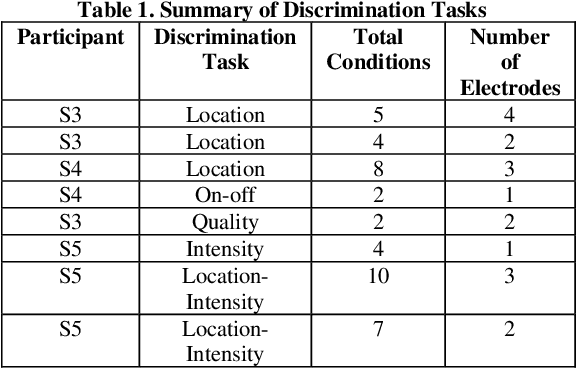
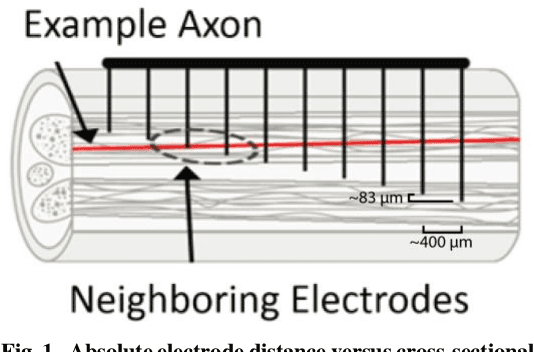
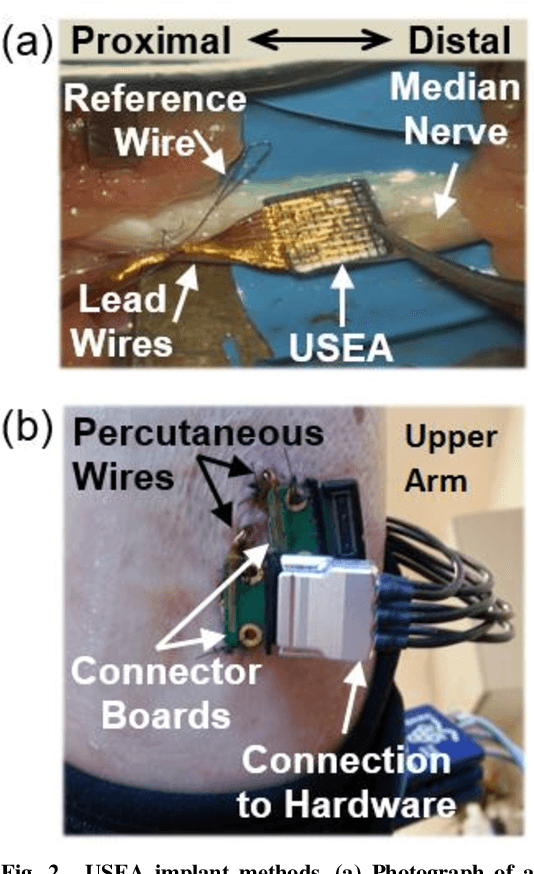
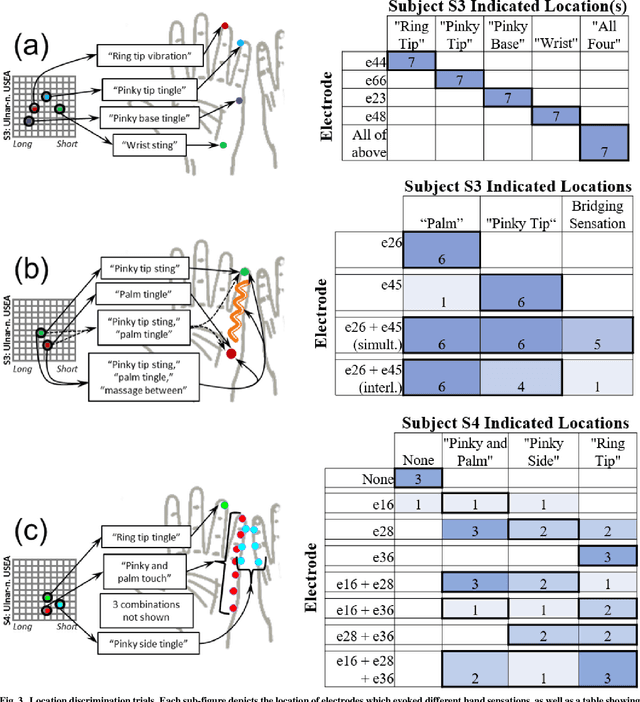
Abstract:Objective: This paper aims to demonstrate functional discriminability among restored hand sensations with different locations, qualities, and intensities that are evoked by microelectrode stimulation of residual afferent fibers in human amputees. Methods: We implanted a Utah Slanted Electrode Array (USEA) in the median and ulnar residual arm nerves of three transradial amputees and delivered stimulation via different electrodes and at different frequencies to produce various locations, qualities, and intensities of sensation on the missing hand. Blind discrimination trials were performed to determine how well subjects could discriminate among these restored sensations. Results: Subjects discriminated among restored sensory percepts with varying cutaneous and proprioceptive locations, qualities, and intensities in blind trials, including discrimination among up to 10 different location-intensity combinations (15/30 successes, p < 0.0005). Variations in the site of stimulation within the nerve, via electrode selection, enabled discrimination among up to 5 locations and qualities (35/35 successes, p < 0.0001). Variations in the stimulation frequency enabled discrimination among 4 different intensities at the same location (13/20 successes, p < 0.005). One subject discriminated among simultaneous, alternating, and isolated stimulation of two different USEA electrodes, as may be desired during multi-sensor closed-loop prosthesis use (20/25 successes, p < 0.001). Conclusion: USEA stimulation enables encoding of a diversity of functionally discriminable sensations with different locations, qualities, and intensities. Significance: These percepts provide a potentially rich source of sensory feedback that may enhance performance and embodiment during multi-sensor, closed-loop prosthesis use.
A Modular Transradial Bypass Socket for Surface Myoelectric Prosthetic Control in Non-Amputees
Sep 26, 2019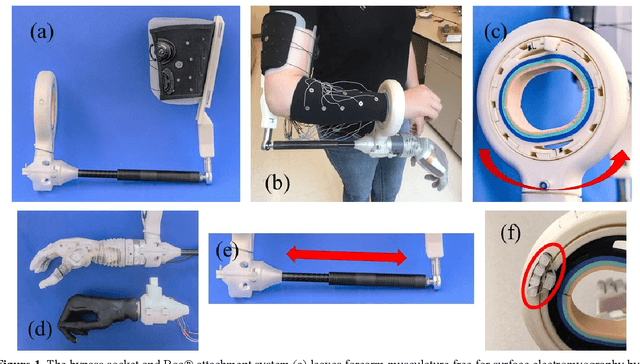
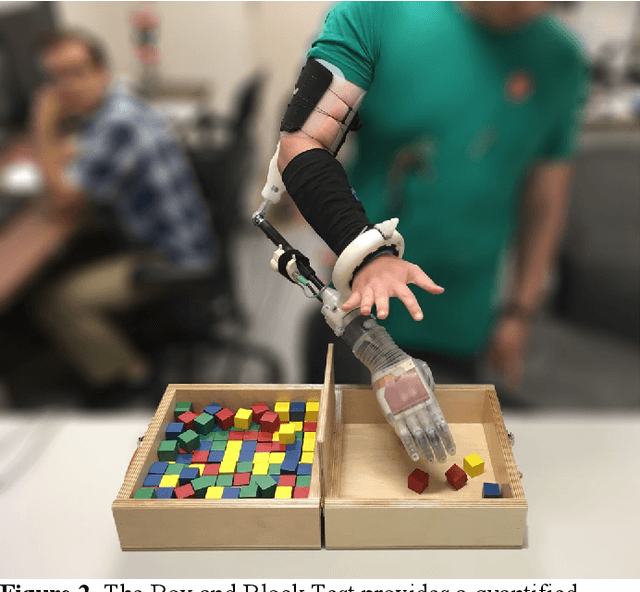
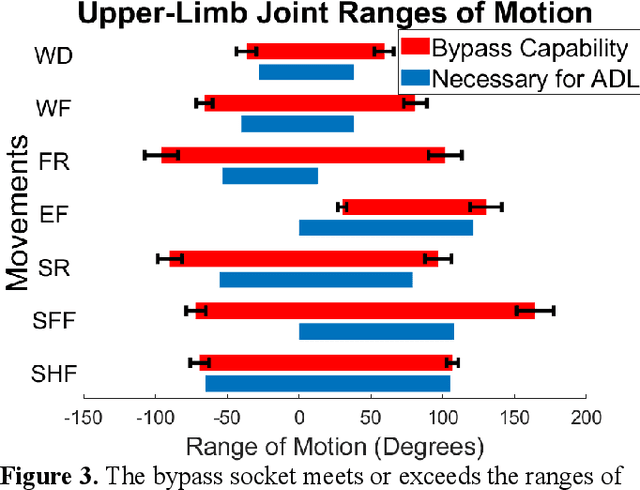
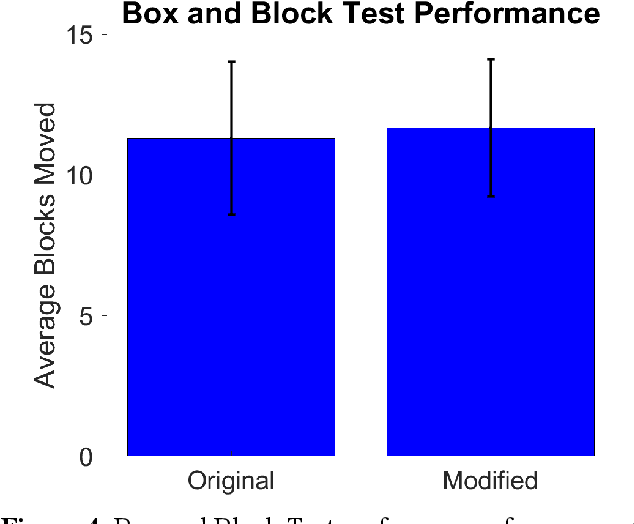
Abstract:Bypass sockets allow researchers to perform tests of prosthetic systems from the prosthetic user's perspective. We designed a modular upper-limb bypass socket with 3D-printed components that can be easily modified for use with a variety of terminal devices. Our bypass socket preserves access to forearm musculature and the hand, which are necessary for surface electromyography and to provide substituted sensory feedback. Our bypass socket allows a sufficient range of motion to complete tasks in the frontal working area, as measured on non-amputee participants. We examined the performance of non-amputee participants using the bypass socket on the original and modified Box and Block Tests. Participants moved 11.3 +/- 2.7 and 11.7 +/- 2.4 blocks in the original and modified Box and Block Tests (mean +/- SD), respectively, within the range of reported scores using amputee participants. Range-of-motion for users wearing the bypass socket meets or exceeds most reported range-of-motion requirements for activities of daily living. The bypass socket was originally designed with a freely rotating wrist; we found that adding elastic resistance to user wrist rotation while wearing the bypass socket had no significant effect on motor decode performance. We have open-sourced the design files and an assembly manual for the bypass socket. We anticipate that the bypass socket will be a useful tool to evaluate and develop sensorized myoelectric prosthesis technology.
* 8 pages, 5 figures
 Add to Chrome
Add to Chrome Add to Firefox
Add to Firefox Add to Edge
Add to Edge